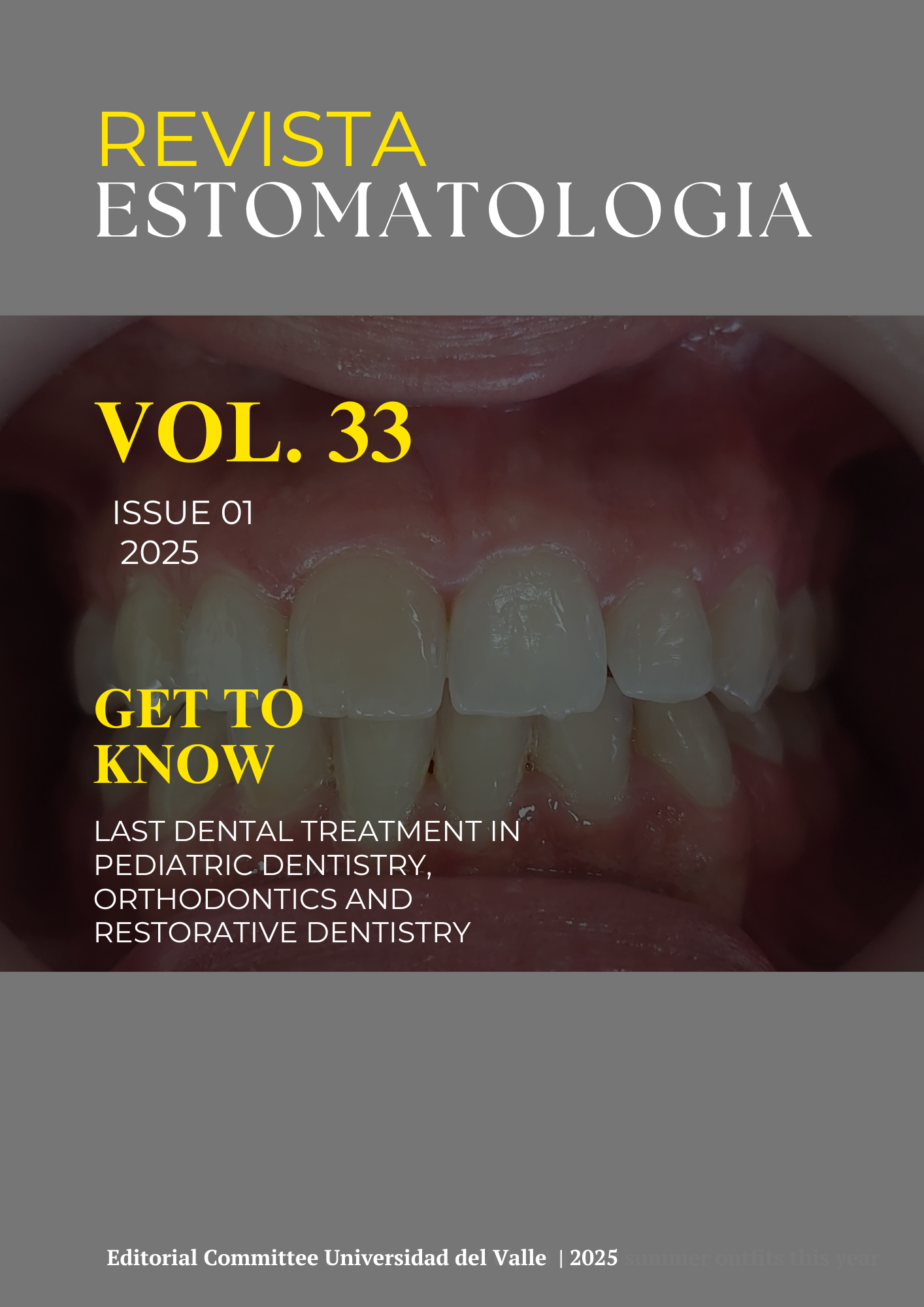Qualitative Evaluation of 3D Resin and Acrylic Occlusal Splints in the Treatment of Temporomandibular Disorders: A Pilot Study
Main Article Content
Abstract
Introduction: This study addresses the increasing application of digital technologies in dentistry, specifically in the fabrication of occlusal splints for the treatment of temporomandibular disorders (TMD). It investigates the effectiveness, fit, and comfort of splints made using conventional and digital methods (3D resin and acrylic), considering the importance of precision in TMD treatment.
Methodology: The research was conducted with a sample of ten patients, evaluating the splints in terms of retention, adaptability, tilting, and the need for reprinting. Conventional and digital splints were compared using qualitative measurements and patient satisfaction as indicators.
Results: Conventional splints demonstrated solid performance across all evaluated categories. However, a digital splint initially presented fitting problems, requiring reprinting. Despite this, digital splints showed significant advantages in precision and efficiency after necessary modifications, with high patient acceptance.
Conclusions: The research highlights the potential of digital techniques in the fabrication of occlusal splints, suggesting superiority in terms of adaptability and patient satisfaction, despite initial fitting challenges. This study underscores the importance of technological innovation in improving dental care for TMD patients, recommending greater adoption of digital methods in clinical practice.
- Temporomandibular disorders, Occlusal splints, 3D printing
Albagieh H, Alomran I, Binakresh A, Alhatarisha N, Almeteb M, Khalaf Y, et al. Occlusal splints-types and effectiveness in temporomandibular disorder management. Saudi Dent J. 2023;35(1):70-9. Doi: https://doi.org/10.1016/j.sdentj.2022.12.013
Loupes OIE, Fill KIV. Digital Workflow for Occlusal Guards Digital technologies that allow the in-office design and fabrication of occlusal guards can reduce chairtime and fabrication time, thus improving the patient and provider experience.
Gary M, Quek SY, Khan J. The relation of temporomandibular disorders and dental occlusion: a narrative review. Quintessence Int. 2022;53(5):450-9.
Lackey NR, Wingate AL. The pilot study: One key. Adv Des Nurs Res. 1997;375. Doi: https://doi.org/10.4135/9781452204840.n15
Nekora A, Evlioglu G, Ceyhan A, Keskin H, Issever H. Patient responses to vacuum formed splints compared to heat cured acrylic splints: pilot study. J Maxillofac Oral Surg. 2009;8:31-3. Doi: https://doi.org/10.1007/s12663-009-0008-9
Lee EH, Ahn JS, Lim YJ, Kwon HB, Kim MJ. Effect of layer thickness and printing orientation on the color stability and stainability of a 3D-printed resin material. J Prosthet Dent. 2022;127(5):784-e1. Doi: https://doi.org/10.1016/j.prosdent.2022.01.024
Wallach R, English JD, Moon A, Brock RA, Paravina RD, Kasper FK. Colour stability of 3D‐Printed orthodontic brackets using filled resins. Orthodontics & Craniofacial Research. 2023 Dec;26:180-7. Doi: https://doi.org/10.1111/ocr.12665
Badel T, Simonić-Kocijan S, Lajnert V, Dulčić N, Zadravec D. Michigan splint and treatment of temporomandibular joint. Med Flum. 2013;49(2):112-20.
Lin R, Yan YQ, Sun J, Yu CH. A Comparison of the Accuracy Between a Digital Fabrication Workflow and a Conventional Fabrication Workflow for Occlusal Appliances: A Pilot Study. Int J Prosthodont. 2023;36(4). Doi: https://doi.org/10.11607/ijp.7947
Wesemann C, Spies BC, Schaefer D, Adali U, Beuer F, Pieralli S. Accuracy and its impact on fit of injection molded, milled and additively manufactured occlusal splints. J Mech Behav Biomed Mater. 2021;114:104179. Doi: https://doi.org/10.1016/j.jmbbm.2020.104179
Blasi A, Henarejos‐Domingo V, Palacios‐Bañuelos R, Vidal‐Ponsoda C, Aparicio C, Roig M. CAD‐CAM and analog occlusal splints comparison based on the amount of occlusal adjustments. 3D analysis of the volumetric changes: A pilot study. J Esthet Restor Dent. 2023;35(8):1271-8. Doi: https://doi.org/10.1111/jerd.13080
Gibreel M, Perea-Lowery L, Vallittu PK, Garoushi S, Lassila L. Two-body wear and surface hardness of occlusal splint materials. Dent Mater J. 2022;41(6):916-22. Doi: https://doi.org/10.4012/dmj.2022-100
Tallarico M. Computerization and digital workflow in medicine: Focus on digital dentistry. Materials. 2020;13(9):2172. Doi: https://doi.org/10.3390/ma13092172
Jahangiri L, Akiva G, Lakhia S, Turkyilmaz I. Understanding the complexities of digital dentistry integration in high-volume dental institutions. Br Dent J. 2020;229(3):166-8. Doi: https://doi.org/10.1038/s41415-020-1928-5
Bessadet M, Drancourt N, El Osta N. Time efficiency and cost analysis between digital and conventional workflows for the fabrication of fixed dental prostheses: A systematic review. The Journal of Prosthetic Dentistry. 2025 Jan 1;133(1):71-84. Doi: https://doi.org/10.1016/j.prosdent.2024.01.003
Perea-Lowery L, Gibreel M, Garoushi S, Vallittu P, Lassila L. Evaluation of flexible three-dimensionally printed occlusal splint materials: An in vitro study. Dent Mater. 2023;39(10):957-63. Doi:
Downloads
Accepted 2025-03-03
Published 2025-10-01

This work is licensed under a Creative Commons Attribution-NonCommercial-NoDerivatives 4.0 International License.
Los autores/as conservan los derechos de autor y ceden a la revista el derecho de la primera publicación, con el trabajo registrado con la licencia de atribución de Creative Commons, que permite a terceros utilizar lo publicado siempre que mencionen la autoría del trabajo y a la primera publicación en esta revista.





